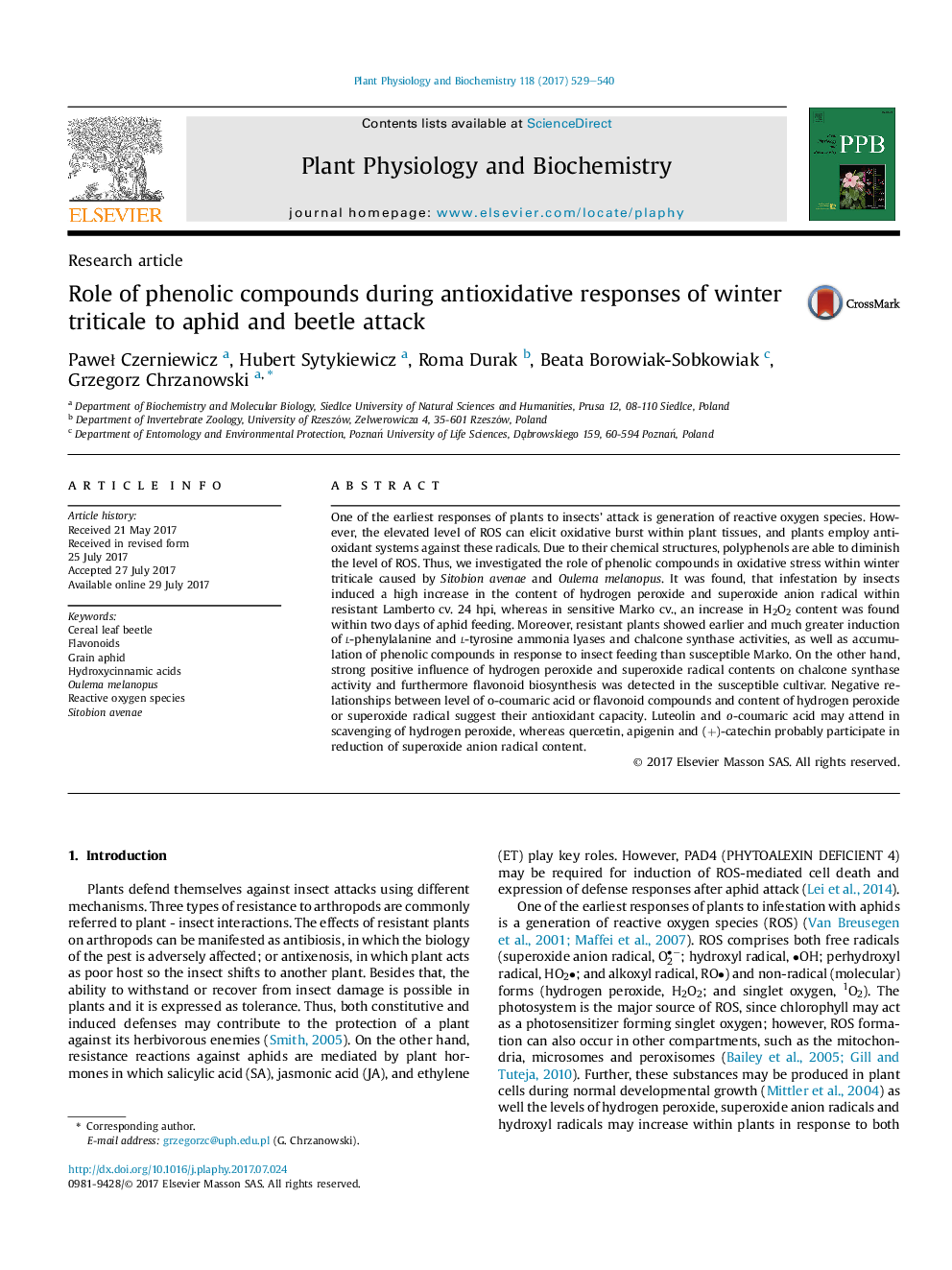| Article ID | Journal | Published Year | Pages | File Type |
|---|---|---|---|---|
| 5515469 | Plant Physiology and Biochemistry | 2017 | 12 Pages |
â¢The grain aphid induced in triticale higher levels of H2O2 and O2â¢â than beetle.â¢Generation of ROS was earlier and higher in resistant than susceptible plants.â¢Chalcone synthase in the susceptible cv. is up-regulated by H2O2, O2â¢â, and TAL.â¢In the susceptible plants, flavonoids play crucial roles in diminishing of ROS.â¢In resistant triticale cv., phenolic compounds act as prooxidants against insects.
One of the earliest responses of plants to insects' attack is generation of reactive oxygen species. However, the elevated level of ROS can elicit oxidative burst within plant tissues, and plants employ antioxidant systems against these radicals. Due to their chemical structures, polyphenols are able to diminish the level of ROS. Thus, we investigated the role of phenolic compounds in oxidative stress within winter triticale caused by Sitobion avenae and Oulema melanopus. It was found, that infestation by insects induced a high increase in the content of hydrogen peroxide and superoxide anion radical within resistant Lamberto cv. 24 hpi, whereas in sensitive Marko cv., an increase in H2O2 content was found within two days of aphid feeding. Moreover, resistant plants showed earlier and much greater induction of l-phenylalanine and l-tyrosine ammonia lyases and chalcone synthase activities, as well as accumulation of phenolic compounds in response to insect feeding than susceptible Marko. On the other hand, strong positive influence of hydrogen peroxide and superoxide radical contents on chalcone synthase activity and furthermore flavonoid biosynthesis was detected in the susceptible cultivar. Negative relationships between level of o-coumaric acid or flavonoid compounds and content of hydrogen peroxide or superoxide radical suggest their antioxidant capacity. Luteolin and o-coumaric acid may attend in scavenging of hydrogen peroxide, whereas quercetin, apigenin and (+)-catechin probably participate in reduction of superoxide anion radical content.
Graphical abstractDownload high-res image (279KB)Download full-size image
